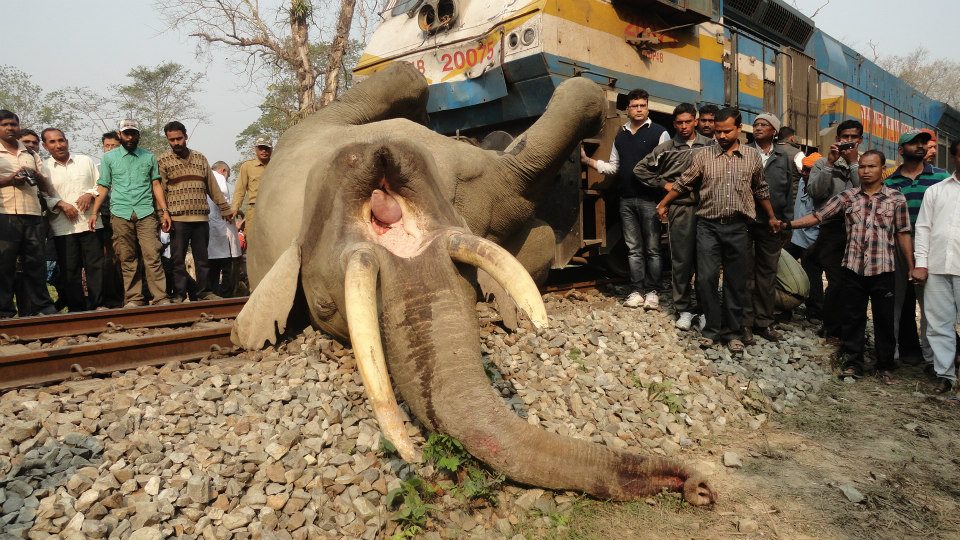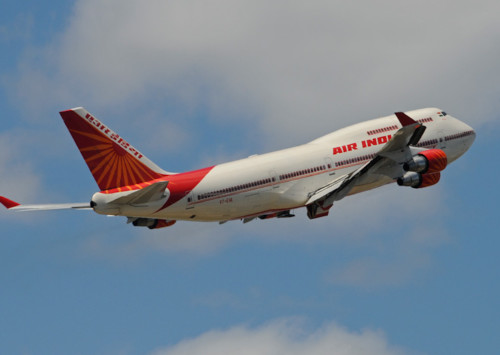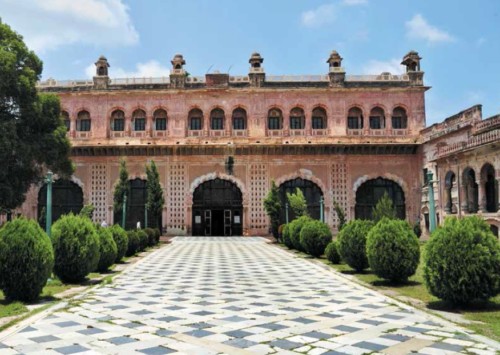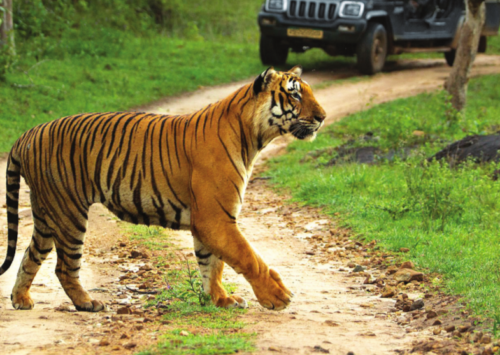Man versus Wildlife in India

According to a report by the Elephant Task force, 150 Elephants were crushed to death by speeding trains between 1987 and 2010.
Accidents on railway tracks are not uncommon. Cases of many people getting injured or even dying are reported regularly. But, this time it is Elephants who have been wounded and killed by train collisions and with the expansion of modern high-speed railways and urbanisation in India, more and more dreadful cases are coming to light.
Elephant is the national heritage animal of India and is also the mascot of Indian Railways. So as so our country’s economy is also compared to an Elephant to imply that it is slow, yet powerful; but not a lot is being done to protect the mighty creatures.
The problem of Elephants dying on rail tracks in India came into limelight in May 2013 after a train killed three elephants in the state of West Bengal, and again in November when another train smashed a herd of 40 Elephants in east India, killing seven adults and two calves and injuring around 10 of them.
Several such accidents have been reported in over 15 years, taking the death toll of Elephants hit by trains in India to over 100.
According to a report by the Elephant Task force commissioned by the Ministry of Environment, 150 Elephants were crushed to death by speeding trains between 1987 and 2010.
Leavening the rail kill
Nearly 55 Elephants have died after colliding with trains around the Mahananda Wildlife Sanctuary in Himalayas after the National Board for Wildlife agreed with the government to construct a railway track along the sanctuary.
Green corridors are being affected by the rail tracks and other construction activities, which run across the forest areas for thousands of kilometers.
Human interference inside the wild habitat causes disjunction of their wild corridors and in return the animals make use of the tracks to access nearby water bodies or in search of food, and sometimes end up getting trapped or killed.
The elevated platforms on both sides of the tracks make it even more difficult for the heavy and slow moving animal to run when a train approaches.
These accidents have reportedly increased since the tracks have been upgraded from narrow gauge to standard gauge, which allows trains to run at high speed.
Co-existence of infrastructure and the wild
A closer look at the issues causing these deaths along with proper planned death reduction efforts are required to address the problem.
To reduce and ultimately put an end on the tragic deaths of Elephants, India replicated a programme in 2008 in Assam at high-priority sites along 26 railway stations spread over 700 kilometre, headed by the Wildlife Trust of India, which remarkably reduced elephant deaths on the railways.
According to the Elephant Family foundation, strategies of the programme included installation of warning signs for train drivers, night patrols on tracks and introducing staff to assist with elephant crossings and prevented approximately 329 potential collisions.
But with the growing speed of trains, track length and passenger numbers, danger for the surrounding environment and its animal inhabitants is also rising. In contrast to the developing infrastructure technology, wildlife protection techniques are still not keeping up with the world.
Strategies like electric fences on both sides of tracks to keep the Elephants off have been ineffective as Elephants pulled them down.
While sticking on to developing infrastructure, the wildlife must not be ignored. It is essential that the government policies are inclusive of both.












